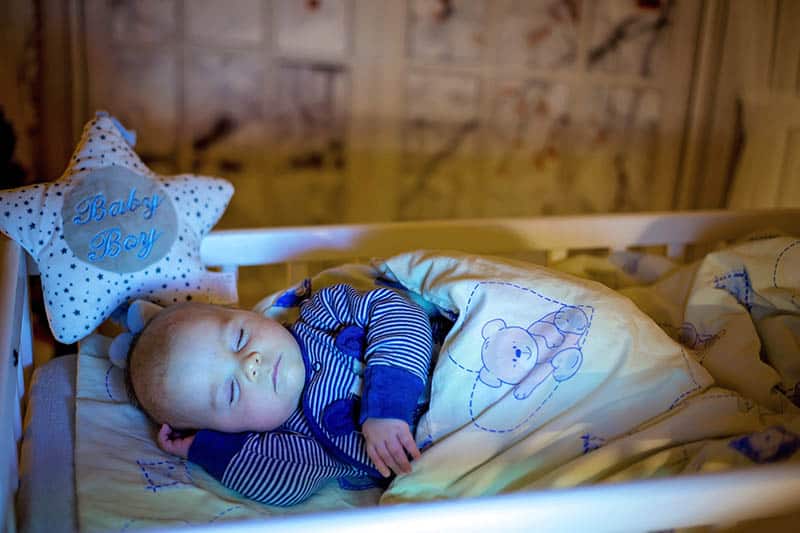Motion sickness is something that can impact people of all ages, even babies. Although it’s not unusual for infants to feel motion sickness, it can be a troubling experience for both parents and their little ones. This article will delve into the signs of motion sickness in babies, successful treatments, and tips for parents on how to handle it.
Symptoms of Motion Sickness in Babies:
Here are a few motion sickness in babies symptoms:
- Nausea and Vomiting: If your baby experiences motion sickness, one of the most common symptoms is nausea, which may result in vomiting. You may notice your baby becoming fussy or uncomfortable during car rides, plane trips, or even swings. Therefore, keeping a change of clothes and some cleaning supplies on hand while traveling with a baby who experiences motion sickness is important.
- Excessive Sweating: Babies experiencing motion sickness may experience excessive sweating, with clammy palms and neck. This response may be due to the discomfort and anxiety caused by motion sickness.
- Pale Complexion: Motion sickness can make babies appear pale or even slightly greenish in color. This change in complexion is due to the discomfort they’re experiencing. It’s crucial to monitor your baby’s color during travel to ensure their well-being.
- Irritability: During travel, infants with motion sickness may become irritable, restless, or inconsolable. They may cry or fuss more than usual. Parents should maintain a calm and soothing environment to alleviate their baby’s distress.
- Loss of Appetite: If your infant gets motion sickness, they may not want to eat or drink. Give them small amounts of food and water after the trip.
Motion Sickness In Babies Treatment
- Positioning: When traveling in a car with a baby, use a rear-facing car seat or carrier that is installed correctly and reclined at an appropriate angle. Some car seats are designed for babies who are sensitive to motion.
- Frequent Breaks: Take breaks during long journeys to allow your baby to stretch, feed, and change diapers. Short, frequent stops can help alleviate motion sickness symptoms and reduce overall travel stress.
- Gentle Rocking: If you’re traveling in a car, gentle rocking motions can sometimes soothe a fussy baby. Consider using a baby swing or rocker in the car to mimic the comforting motions of a cradle.
- Fresh Air: Make sure to keep your car or other mode of transport well-ventilated to alleviate nausea. Use the air conditioning system or crack a window to maintain a comfortable temperature.
- Avoid Overfeeding: Feeding your baby right before travel may worsen motion sickness. Try to feed them a light meal a little while before the journey. Offer small, easily digestible snacks during travel if your baby is hungry.
- Distraction: Distract babies with toys or conversation to avoid motion sickness. Play soft music or install a baby-safe mirror in the car for entertainment.
Travel Sickness in Babies: NHS Recommendations:
In the United Kingdom, the National Health Service (NHS) offers guidelines for managing travel sickness in babies. According to the NHS:
- Always use a rear-facing car seat for babies under 15 months old, as it provides better support for their developing neck and spine.
- Ensure the car seat is correctly fitted and reclined at the recommended angle. Many car seat models come with detailed instructions for proper installation.
- Take regular breaks during long journeys to feed, change diapers, and allow your baby to stretch. These breaks not only help with motion sickness but also promote healthy development.
- Try to plan travel around your baby’s nap times to minimize discomfort. A well-rested baby may be less susceptible to motion sickness.
- If you’re concerned about motion sickness, consult your GP for advice and potential medications. They can provide recommendations based on your baby’s specific needs and medical history.
Motion Sickness in Newborns:
It’s important to be aware that motion sickness can affect newborns, too, as their inner ear is not yet fully developed and can make them more sensitive to motion. To minimize the risk of motion sickness in newborns, it’s recommended to:
– Use a rear-facing car seat that is appropriate for their age and weight, and make sure it fits properly.
– Provide suitable headrests and cushions to support their head and neck and maintain a stable position.
– Choose routes with smoother roads or less vibration whenever possible.
– Pay attention to your newborn’s comfort cues, such as fussiness or restlessness, and address them promptly.
Final Thought
While motion sickness in babies and newborns can be challenging, it can be managed effectively with proactive measures and proper care. By recognizing the symptoms, following recommended practices, and seeking advice from healthcare professionals when necessary, parents can ensure a more comfortable and enjoyable travel experience for their little ones. Remember that every baby is different, so it’s crucial to tailor your approach to their specific needs and preferences.





